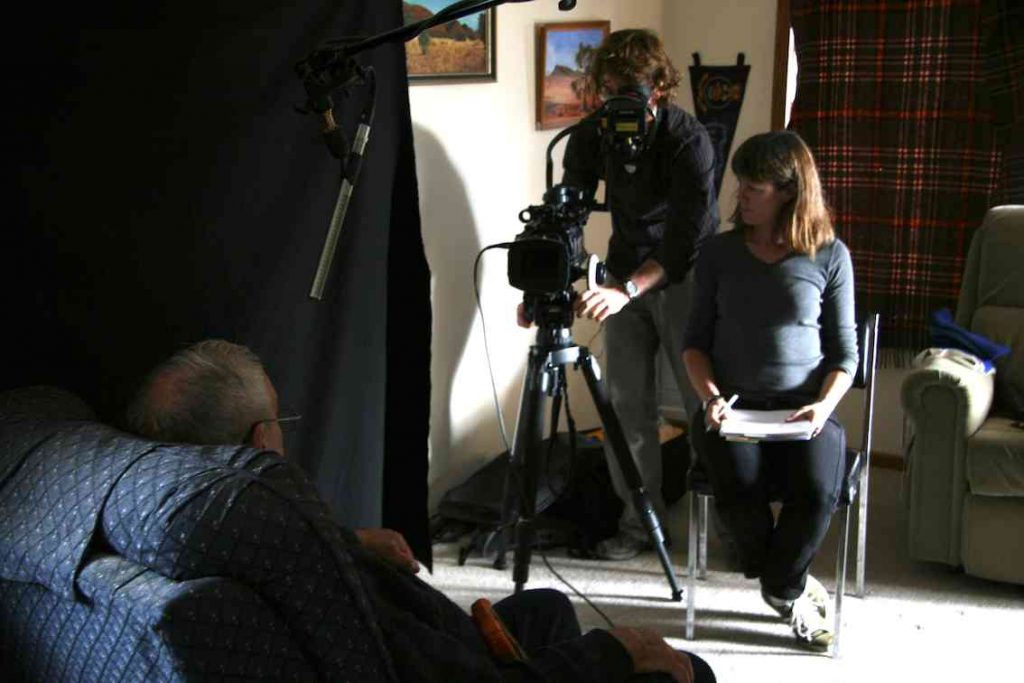“Briarbird worked hard and provided us with a quality product, while coping with short timelines and limited resources. The sensitivity in which they showed towards our elderly veteran interviewees was to be particularly commended.”
Michelle Smith, Project Curator, Defence of Darwin Experience
When we tendered to produce 13 digital stories for the NT Defence of Darwin museum, we had no idea that it would become a job where time would feature so strongly. Not only did we have a compact 3 month time-frame for the work itself, but all our interviewees themselves were in their nineties, and their wonderful stories, often never before told, would soon be lost forever.
Background to the bombing of Darwin
The focus of the project was the bombing of Darwin in 1942 by the Japanese. Darwin was first bombed in a huge and deadly raid on the 19th of February, where over 240 people were killed. The raids continued in the far north for over a year.
Our brief
Our brief was two-fold. Firstly, to record a detailed interview with each of the subjects, around 2 hours worth, for the NT Archives. This included photographing any relevant memorabilia and photographs. Secondly, we were to edit an 8 to 10 minute story from each interview, to be used on a StoryShare system, and viewed as part of the Defence of Darwin permanent exhibition.
Interviews from Nambucca Heads to Esperance
It was a surprise for us was that only one of the interviewees currently lived in Darwin. The 12 men and one woman were scattered across every state in Australia. To meet the deadline we created four teams (director and camera/sound person) that travelled extensively. To ensure a consistent approach we developed detailed briefing materials and kept in close contact throughout every shoot.
Expert historical input
The success of this project was made possible because of the extensive research that was undertaken by key members of the project team – John Richards, from NT Library and Matthew Stephen, from NT Archives. Their knowledge and passion for history and for the interviewee’s stories enabled us to have a very detailed brief from which to begin.
Interviewing with respect
Time spent with these survivors was of a different order, and needed to be. As always when shooting you have an eye on the time – you book a camera person for a half-day and there’s no budget to extend this. But talking about memories cannot be done quickly and for most of our subjects, these memories are painful and troubling. So we set up lighting, camera and sound fast as we could so it looked great, and then we set about making our interviewee as comfortable as possible. The interviews were loose as we gently guided the conversation through their war experiences, time in Darwin and the aftermath of the war.
All of us were surprised and moved by their stories. The things they have seen and felt and experienced have remained with us all. It has made us realise how vital and urgent it is that we record more of these stories before they are all gone.
Editing at a distance
Post-production was in Darwin and there were 3 editors and a post-production supervisor – someone we relied on enormously. Each editor had access to generic archival photos supplied by the client, as well as the archival material shot by the director. We could effectively span the distance between Melbourne and Darwin through a flood of email and phone calls. Hard-drives were couriered north, and cuts uploaded to Vimeo.com and viewed by us, and the client for feedback. We became experts on file conversions and sizes and the vagaries of varying versions of Final Cut Pro.
The outcomes
In just over 3 months we produced over 2 hours of broadcast quality digital stories, complemented by over 20 hours of long interviews, transcripts and photos of memorabilia. The digital stories currently feature at the NT Defence of Darwin museum.
